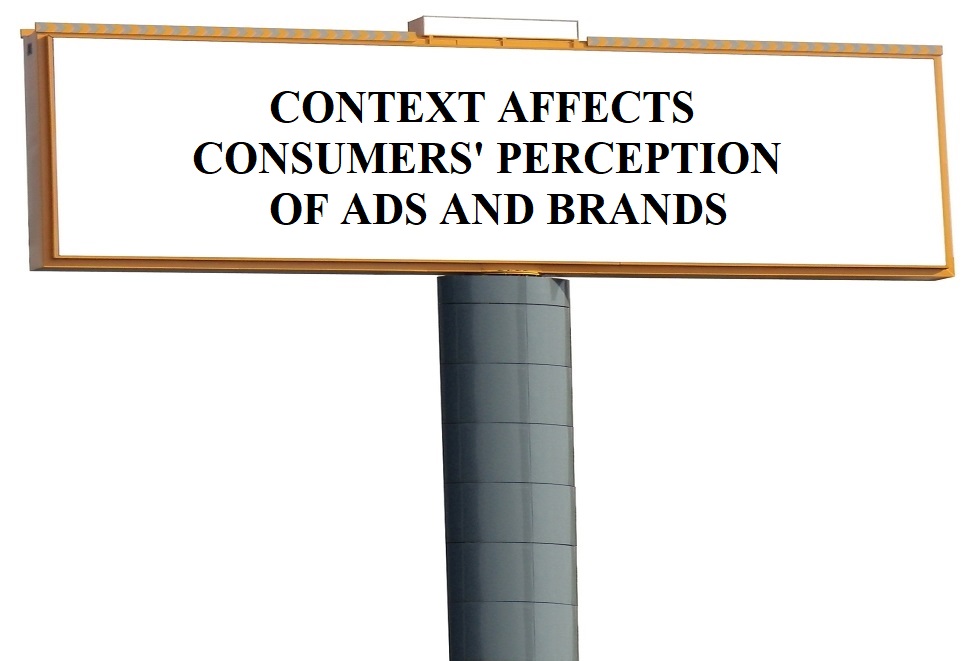Understanding the Effects of Context and Sentiment on Consumers’ Perception of Ads and Brands | 15 Nov, 2021

The digital advertising landscape is increasingly shifting towards contextual relevance. Brands are using contextual advertising approach for connecting with the right consumers with the right message and at the right time.
A recent survey study has shown that the quality of the environment in which a brand’s ads are placed influences consumers’ perception of the ads and the brand. The online survey, which involved more than a thousand participants, aimed to find out the kinds of ads that people prefer to see in different types of environments, and how context and sentiment of the content of a webpage affect people’s feelings towards the ads placed on that page and the associated brands.
The results of the survey are highly favorable to contextual targeting companies. Seventy percent of the survey participants stated that it is important, at least to some degree, that digital ads placed on a page are relevant to the page’s content. This means people value seeing ads that are in line with the content they are consuming.
Seventy-four percent of the survey participants, i.e., about three in four participants, stated that they like to see those ads on a web page that match with the content of the page. This finding reveals the preference of consumers for contextually relevant ads.
Seventy-two percent of the participants said that the content surrounding a digital ad impacts their perception of the ad. This finding reveals that people not only just give preference to the ads that are contextually relevant to the surrounding content, but also perceive them in a better way. The content of a web page influences the opinion of people about the ads on that page.
When participants were shown content from different content categories such as entertainment, finance, shopping, etc., their ad preference was found to be consistent, i.e. for each of the different content types, they always preferred to see ads contextually relevant to that content type. Thus, by leveraging the expertise of contextual advertising companies, brands can achieve unprecedented reach and engagement.
Fifty-six percent of the participants stated that they form a more favorable opinion towards a brand whose ads are contextually relevant. Sixty percent said that they are likely to remember ads that align well with the content of the page.
A piece of content can communicate a positive, neutral, or negative feeling to the people consuming it. Majority of the participants, i.e. seventy-two percent, said that the sentiment of the content they consume influences their feelings towards the brands whose ads are shown against that content.
The survey study found that, on average, participants were more receptive to content that conveyed positive or neutral feelings. Participants also showed increased favorability towards the brands whose ads appeared against content with positive or neutral sentiment. Moreover, participants showed increased memorability for ads placed against content with positive or neutral sentiment.
By understanding how context and sentiment affect consumers’ perception of ads and brands, marketers can boost consumers’ engagement with ads and brands.

BLOGS
Migrate from Oracle to Silverpush: Unlock Advanced Contextual Advertising Solutions
The news that Oracle plans to shut down its advertising business by the end of September has sent shockwaves through the ad industry. Once the most prominent advertising data seller in the market, Oracle is now closing its advertising division. This included Datalogix for offline consumer data, Grapeshot for contextual ...

BLOGS
Cannes 2024 Recap: Silverpush Takes AI Discussions to the French Riviera
As Cannes 2024 concludes, the echoes of vibrant discussions, insightful panels, and significant meetings continue to resonate. This year’s central theme was clear: AI's growing dominance in advertising solutions, optimizing campaigns for business outcomes, and reaching audiences effectively across various screens. With videos becoming increasingly digital, the potential for more addressable ...

BLOGS
UK Programmatic Advertising Spending & Trends in 2024
In 2023, programmatic advertising spending in the UK reached roughly £30.6 billion. The programmatic display advertising market is projected to grow by 12.6% in 2024, bringing it to within just four percentage points of becoming fully programmatic. This highlights how integral this technology has become to the UK ad industry. ...







